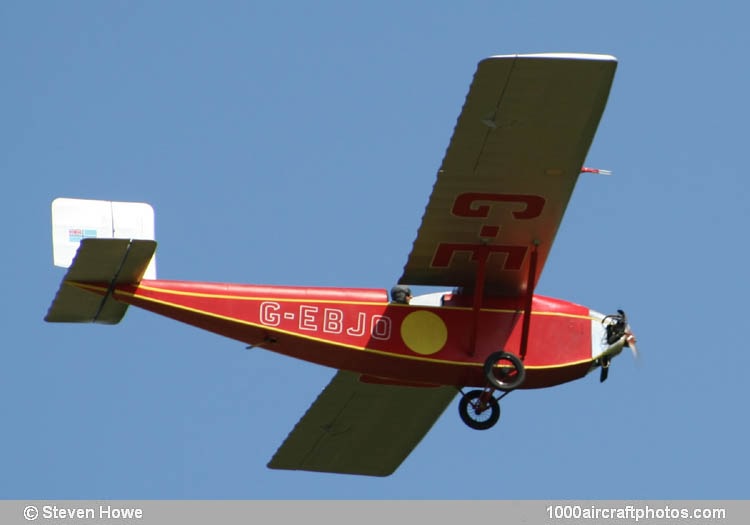Built for the Air Ministry's 1924 competition for two-seaters fitted with engines of up to 67.13 cu.in (1,100 cc), it emerged as a scaled-up version of the single-seat ANEC I, even to the characteristic one-piece elevator, but after preparation at Lympne, broken valve-springs eliminated the machine both from the competition and from the Grosvenor Trophy Race. As Major J.C. Savage's entry in the 1925 King's Cup Race, it failed even to reach the starting line.
G-EBJO was sold to G.L.P. Henderson in 1927, and as a result of experience with a similar Shackleton design, the Beardmore Wee Bee I, he replaced the 67.13 cu.in (1,100 cc) Anzani with a 32 hp Bristol Cherub III engine and modified the landing gear to strut-type to improve ground clearance. It then took part in that year's Bournemouth Easter and Whitsun Meetings and the races at the Hampshire Air Pageant, Hamble, flown by its new owner, Norman Jones.
On July 16, 1927 Jones flew it to victory in the Air League Challenge Cup Race, covering the 116 mls (187 km) course from Castle Bromwich to Woodford and back at an average speed of 73.5 mph (118.29 kmh), but after averaging 74.7 mph (120.22 kmh) on the first lap of the King's Cup course a fortnight later, had the misfortune to hit a bird, and withdrew. In 1929 the machine was sold to Allen H. Wheeler who flew it continuously at Heston and elsewhere.
However, the aircraft was in a poor state when it was sold to Jimmy Edmunds at Old Warden in 1931 for £8.00, missing its engine, landing gear and instruments. Rebuild in six months by Edmunds, and fitted with a 32 hp A.B.C. Scorpion Mk.II engine, the aircraft was flown again until 1935, when it was sold to a South African but it was kept stored at Old Warden. The last registered owner before the CofA expired 1937 was Doug Guild of Maidstone.
Reportedly Richard Shuttleworth obtained the ANEC II in 1938, and 21 years later it was unlikely it would fly again. However, it was reregistered to the Shuttleworth Trustees, again as G-EBJO, on April 8, 1993, and a rebuild to the post Lympne configuration (apart from change to a single-seater) was undertaken by Don Cashmore. Eleven years later, March 2, 2004, test pilot Dodge Bailey took the ANEC II to the air again, eighty years after its first flight."
